Influenced by literature, art and theater classics, Daniela Edburg explores death, consumerism, destruction, and delirium from a satirical and critical point of view. Obsessed with telling stories, she creates scenarios through symbolic compositions for each image. Her work is a sharp observation of the world and its neurosis, interested in creating obsessive characters to the point that their energy becomes self-destructive and nonsensical.
Daniela describes herself as a compulsive person. She says that her work is not critical of modern society but an exaggeration of her own reality. The composition in her images appear to be made in a thoughtful, careful process and have a visual elegance that is the root of her satiric humor. Nonetheless, these images hold aesthetics full of color that contribute to scenic dark comedies. Edburg’s personal narrative explores the world in which reality is distored to be made evident. Families having a picnic observing the explosion of a bomb, a woman being murdered by bananas are all part of Daniela’s work.
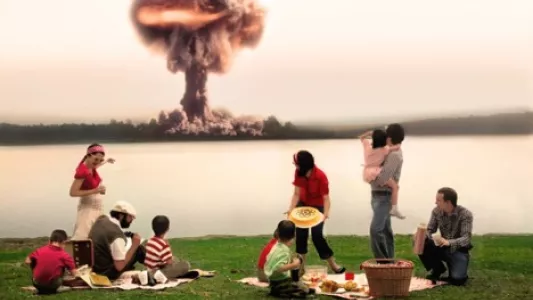
Death is somewhat subtle in her work, in Drop Dead Gorgeous, she creates images that portray our contemporary anxieties with sarcasm. These scenarios are common places in which consumerism is made visible through delirious images of death. Later on, she explores the concept in depth in her series Killing Time where she portrays the creation itself or the creative energy that returns to destroy us.
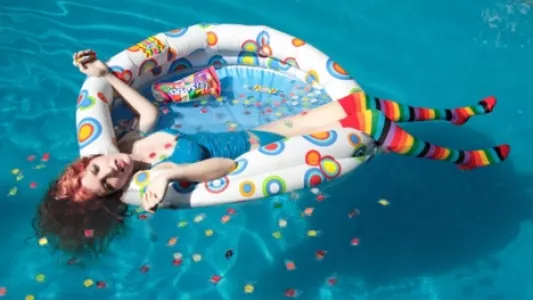
Edburg’s work originates from the in-between world of fiction and reality. Her concepts approach perverse extremes like death or suicide by consumerism. By using a naïve expression, she juxtaposes how easy it can be to lose control and cross boundaries of reality. Each piece of work is different, but they all happen to meet in the same place of tenderness, innocence and tranquility. Displaying the absurd contrast is the result of disturbing images where the death of women is caused by excess of food or beauty products.
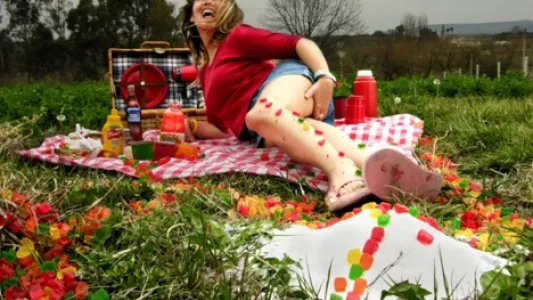
In recent years, Daniela has included knitted and crocheted objects into her work. She states, in her artist statement, that she originally used them to represent “a variety of subjects, from the creation of a safe place to an obsession channeled in an attempt to preserve mental health of a creation that destroys and consumes its creator, “like Frankenstein’s monster”.” Now she uses them to make soft, absurd representations of almost anything.
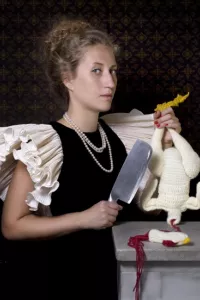
In her series of portraits, Parasites and Perishibles, the use of chiaroscuro gives the work a dark, gloomy look that centers the attention on the model without the use of landscape as sometimes seen in her other works. Referring to yet another one of her obsessions -knitting- she produces objects to represent imitation. In this work, Edburg picks up on two traditional postures in art: portraits and still life, only adding the element of knitted objects that otherwise would be unattainable. In most of her work she is interested in imitating works of the Renaissance period and the use of knitted objects allow this to be made with a little twist; the object is a copy of the object, as well as the style of the portraits are a copy of another style. For her, these portraits perform a series of simulations within the work and dialogue with our idea of what is real, what is the suspicion of evidence in reality and our desire to make sense of everything and the nonsense.
Daniela is a visual artist. After experimenting with different techniques in the art world, she saw photography as a language that would complement her narrative. Using elements from classical references like Rembrandt and Caravaggio, she crafts these stories to narrate the paradox between our human nature and the contradictions in modern society. In these tragedies, we can identify ourselves as they come from a universal symbolism that have become part of our collective imagination.
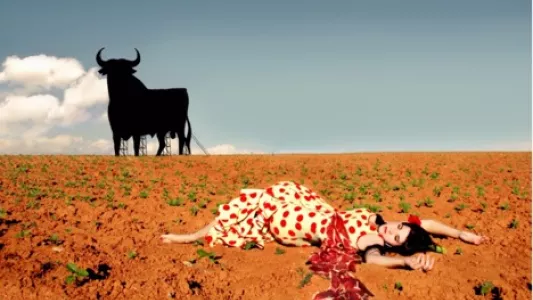
Edburg was born in Texas but grew up in San Miguel de Allende, Mexico. Her work has been shown around the world and has been acquired for public collections such as the Collection of the Art Museum of the Americas in Washington D.C, the Museum of Latin American Art in California, the Museum of Fine Arts Boston and the Astrup Fearnley Museet in Oslo.






